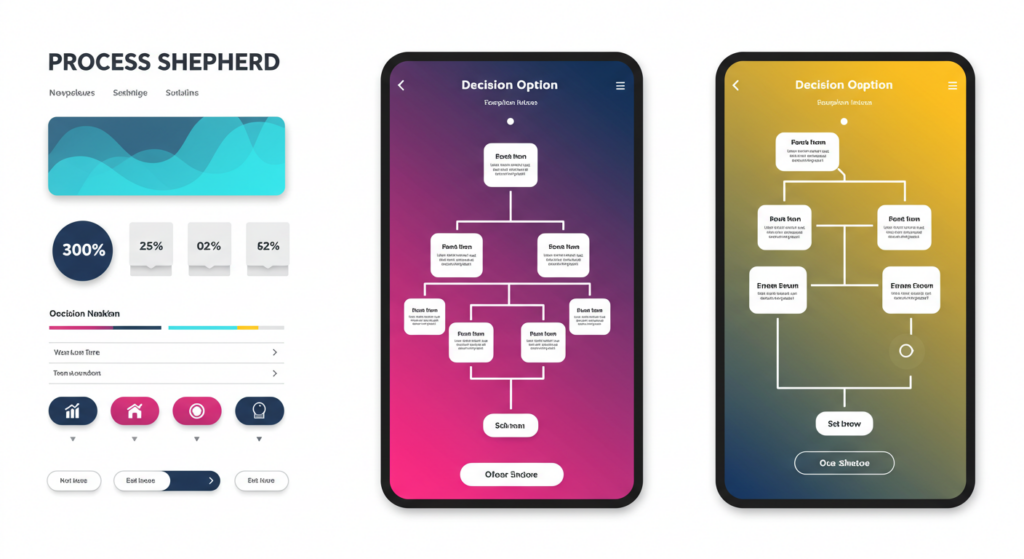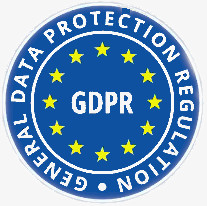
There’s no doubt that business decisions today are as tricky as never before. One wrong move, and you’re stuck with wasted budgets, missed opportunities, or unhappy customers.
And that’s where decision tree software comes in. These tools map out complex choices visually, turning gut feelings into structured strategies without the mess or confusion caused by inconsistencies.
But hang on a second….With dozens of options claiming to be “the best,” how do you actually pick the right one? We’ve tested 23 tools, crunched the data, and narrowed it down to the top 5.
Spoiler: Process Shepherd isn’t just another option—it’s the game-changer your team needs.
Now let’s get right into it….
What Is Decision Tree Software?
Decision tree software helps businesses visualize workflows, predict outcomes, and automate decisions using branching logic.
Think of it as a digital flowchart on steroids—it analyzes data, assigns probabilities, and recommends the optimal path.
Key Features to Look For
Drag-and-Drop Interface: No coding skills? No problem, even the average user can work with it.
AI-Powered Predictions: Turn historical data into future wins, so no history dwelling here, it’s about leveraging all past data towards future better decisions.
Collaboration Tools: Get your marketing, sales, and ops teams on the same page.
Integration Capabilities: Plays nice with CRM, ERP, and analytics platforms.
Scalability: Grows with your business, from startups to enterprises.
The Top 5 Decision Tree Software Tools Compared
1. Process Shepherd: The All-in-One Decision Intelligence Platform
Features:
Smart Automation: Build decision trees in minutes with AI suggestions.
Real-Time Analytics: Track KPIs like ROI, risk levels, and success rates.
Custom Templates: Pre-built frameworks for HR, finance, and supply chain.
Team Workspaces: Assign roles, leave comments, and track revisions.
Benefits:
Cut Decision Time by 70%: One healthcare client reduced patient triage errors by 82%.
No Hidden Costs: Transparent pricing starts at $20/user/month.
24/7 Support: Email and comprehensive training webinars.
Why It’s #1: While tools like Lucidchart focus on diagrams, Process Shepherd ties decisions to real-world outcomes. Its predictive engine learns from your data, flagging bottlenecks before they blow up. Plus, the free trial includes all premium features—no credit card required.
2. Lucidchart: Visual Simplicity Meets Basic Logic
Pros:
User-friendly for non-tech teams.
Integrates with Slack and Google Workspace.
Cons:
Locks advanced analytics behind higher tiers ($45+/user/month).
Limited automation—you’ll still manual update 40% of workflows.
Best For: Small teams needing simple flowcharts.
3. IBM SPSS Modeler: Heavy-Duty Analytics for Data Scientists
Pros:
Handles massive datasets.
Advanced statistical modeling.
Cons:
Steep learning curve (expect 3+ weeks of training).
Pricing? Let’s just say you’ll need CFO approval.
Best For: Enterprises with deep pockets and PhDs on staff.
4. Trello + Butler: DIY Decision Trees for Jira Junkies
Pros:
Flexible Kanban boards.
Automate repetitive tasks with Butler bots.
Cons:
No native decision tree templates.
Glitchy when scaling beyond 50 users.
Best For: Agile teams already married to Trello.
5. MindManager: Brainstorming Tool with Basic Decision Features
Pros:
Great for mapping ideas.
Offline mode available.
Cons:
Clunky UI stuck in 2010.
Zero predictive analytics.
Best For: Solopreneurs who prioritize mind maps over metrics.
Comparative Analysis: How These Tools Stack Up
| Feature | Process Shepherd | Lucidchart | IBM SPSS | Trello | MindManager |
|---|---|---|---|---|---|
| AI Recommendations | ✅ | ❌ | ✅ | ❌ | ❌ |
| Real-Time Collaboration | ✅ | ✅ | ❌ | ✅ | ❌ |
| Pricing Transparency | ✅ | ❌ | ❌ | ✅ | ✅ |
| Free Trial | Free Tier | 7-Day Basic | ❌ | ✅ | 30-Day Trial |
FAQs
How does Process Shepherd handle data security?
All data is encrypted with AES-256 and stored in SOC 2-compliant servers. Role-based access ensures only authorized users view sensitive info.
Can I export decision trees to PowerPoint? Yes! Process Shepherd lets you export to PPT, PDF, or CSV with one click.
What industries benefit most from decision tree software? Healthcare (patient diagnostics), finance (loan approvals), retail (inventory planning), and IT (risk management).
Is free decision tree software reliable? Free tools like Draw.io work for basic diagrams but lack predictive analytics. For data-driven decisions, invest in a paid tool like Process Shepherd.
How long does setup take?
Most users build their first decision tree in under 30 minutes with Process Shepherd’s nguided tutorials.
Do I need coding skills to use these tools? Not at all. Process Shepherd and Lucidchart use drag-and-drop interfaces—code-free from start to finish.
No More Guess Work, Embrace Data-Driven Decisions
Choosing decision tree software isn’t about flashy gimmicks—it’s about results. While Lucidchart and Trello have their niches, Process Shepherd is the only tool that blends ease of use with enterprise-grade analytics.
Why settle for drawing arrows when you can predict the future?



